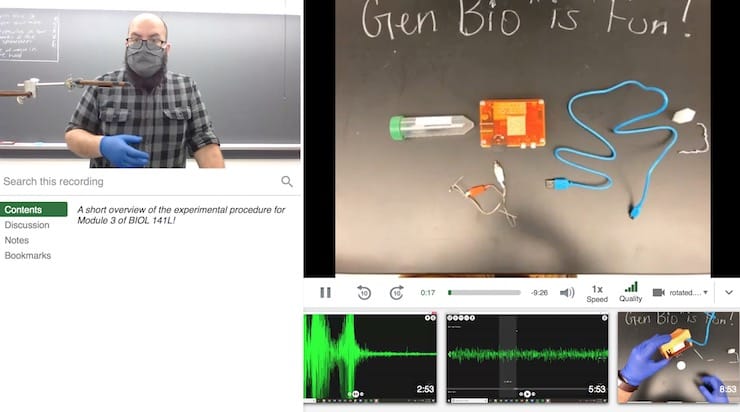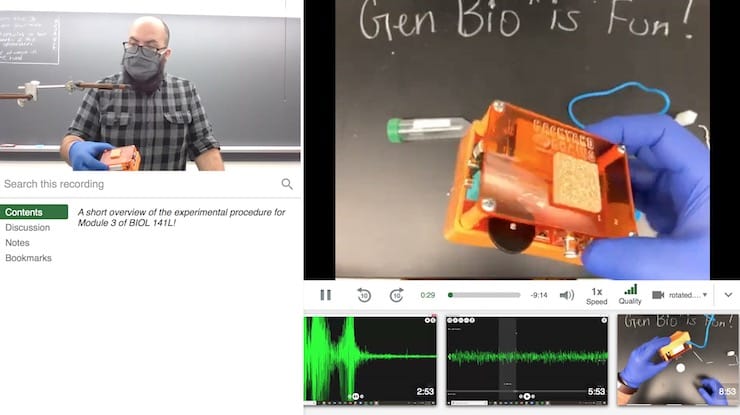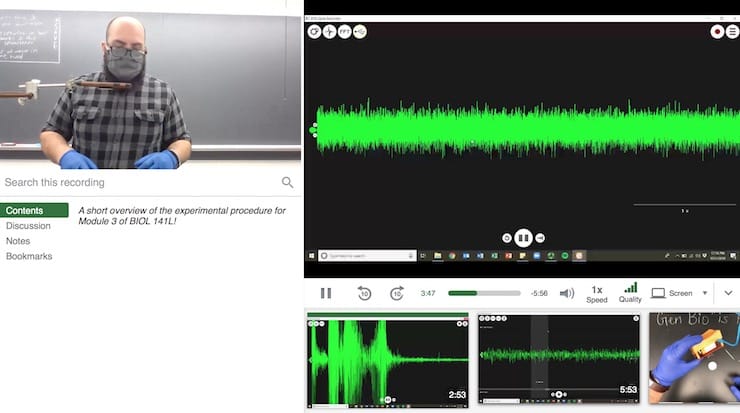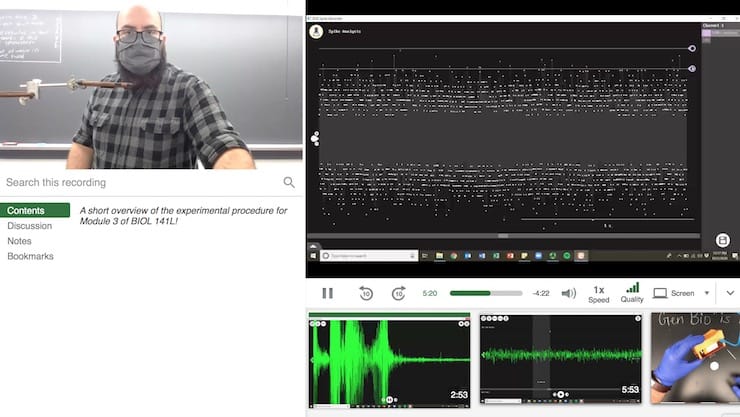Faculty Creatively Adapt Biology Labs for Semester
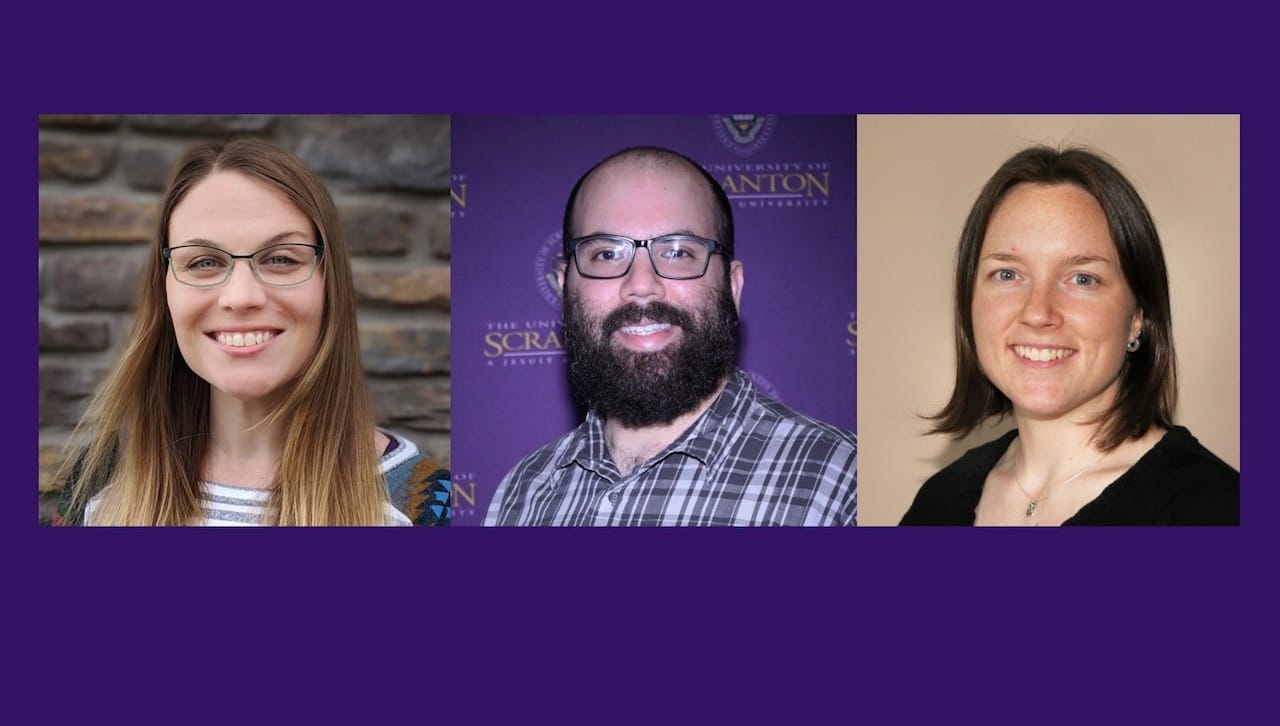
Biology faculty members Ashley Driver, Ph.D., David Ingber, Ph.D., and Tara Fay had to rethink how they ran their lab classes during the fall semester to safely meet the health restrictions caused by the pandemic.
Dr. Driver, who taught the lab for her Cellular Biology course (Bio 350) and Dr. Ingber, who taught the lab sections for General Biology courses (Bio 141 and 142), both used technology in different ways to introduce a technique or experiment, which is normally done during the lab, in order to optimize the students’ time spent in the lab.
Dr. Driver used virtual simulations to introduce the particular technique that the students then practiced in the lab.
“What this allowed me to do was to navigate the issue of having fewer students able to be in the lab at a given time because of social distancing requirements and having to shorten the lab activities to be able to rotate students through, while still giving them enough knowledge so they are able to get something out of that technique,” said Dr. Driver. “The real goal of a cellular biology lab is to have students experience and apply techniques that are common in cell and molecular biology. I have the students complete online simulations followed by shortened in-lab experiments where use one of these techniques to gain data and then interpret the data to draw conclusions.”
For his General Biology labs, Dr. Ingber used Panopto to create video demonstrations of the experiment his students would then complete in a lab session.
“The demonstration video shows the students what they will be doing in that lab. The video shows a top down view where you see my hands as I do the experiment, in addition to multi-camera views where it shows me and a white board or the screen of my laptop if we are using a specific program. The goal is to have the students know exactly what they have to do when they get into the lab,” said Dr. Ingber, who also had to rotate students through the lab periods in order to meet the social distancing constraints of the space.
Dr. Ingber also customized pre-lab lessons using an online tool (Lt by ADInstruments) that included graphs, questions, downloadable items and pop-ups with videos and vocabulary to help the students understand the significance of the procedure they would be performing. He moved the instructional time online in order to have in-classroom time strictly focused on data collection. Following the lab, the students then used the data they collected to complete their analysis and write their lab reports.
In addition to the social distancing requirements that limit the number of students in lab spaces, the Human Anatomy and Physiology course labs (Bio 110) taught by Prof. Fay use painted models and bones that would not tolerate the disinfecting cleaners required for students to safely handle them. These factors led Prof. Fay to teach the labs remotely.
“As a way to try to offset the loss of the hands-on component of the lab, the students used an oil-based modeling clay that remains its pliable for months to make models of a long bone, a portion of the spinal cord and some human muscles,” said Prof. Fay. “We used the clay models in about half the labs during the semester and since the clay doesn’t dry out, the students can then refer to the models they created to study for the course.”
For dissection labs, Prof. Fay used a program called Visible Body that “is basically a human anatomy atlas. The images are interactive where you can add muscles, or take away muscles, add skin or take skin away, which allowed the students to do a virtual dissection,” said Prof. Fay. She said the program also allows students to watch videos of the muscle in action.
“When a particular muscle contracts it performs an action to move a part of your body in a specific way. The students had the ability to watch muscles working,” said Prof. Fay.


